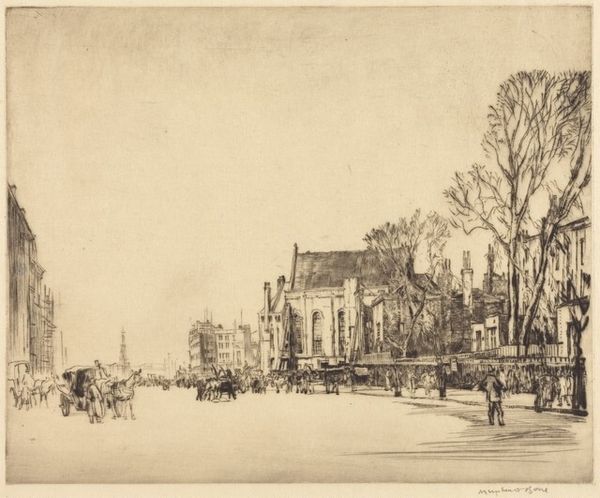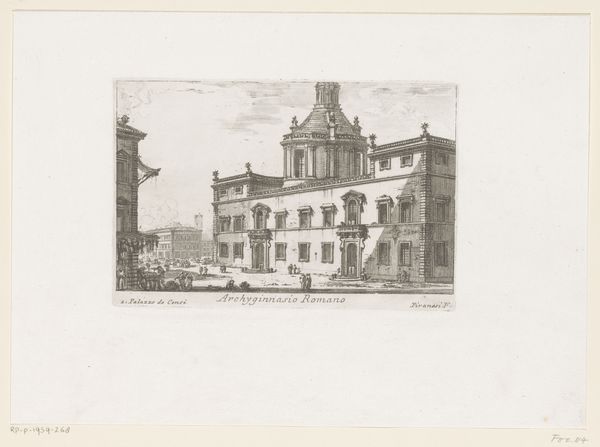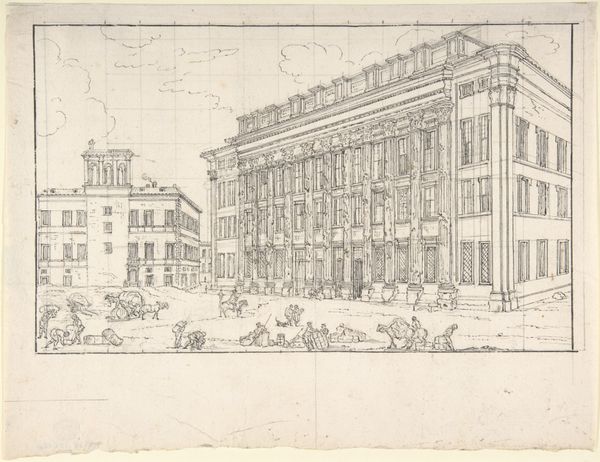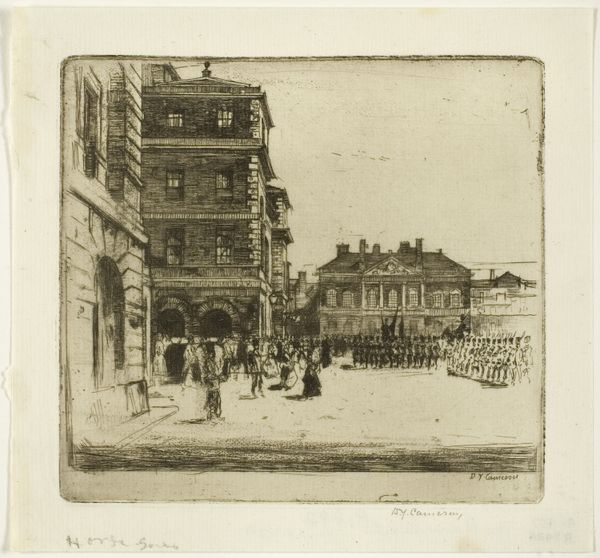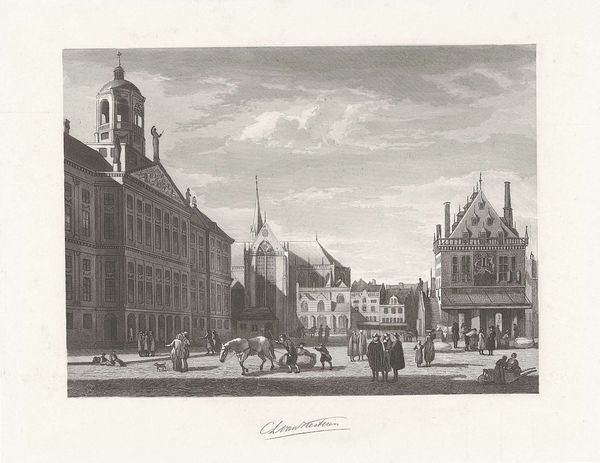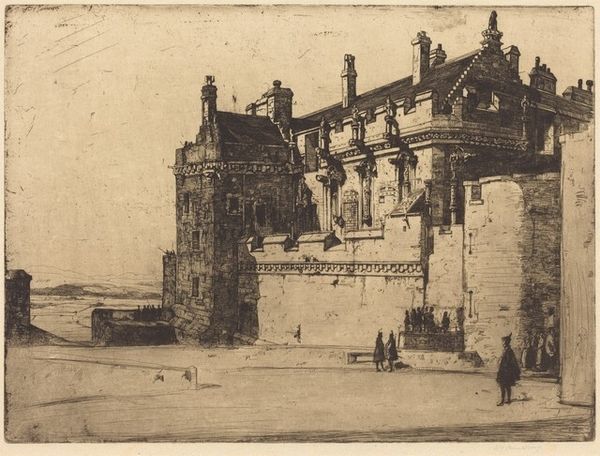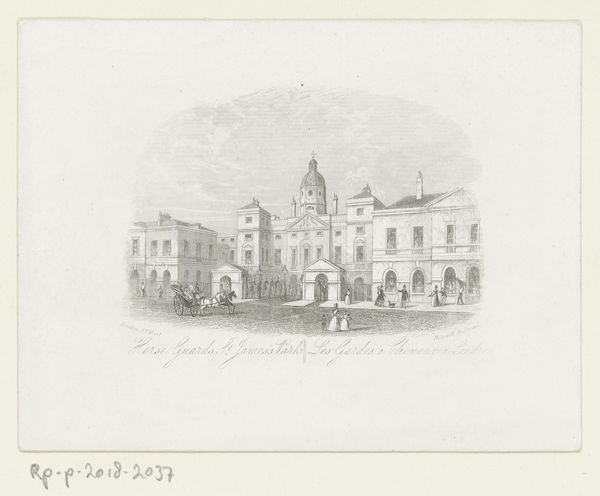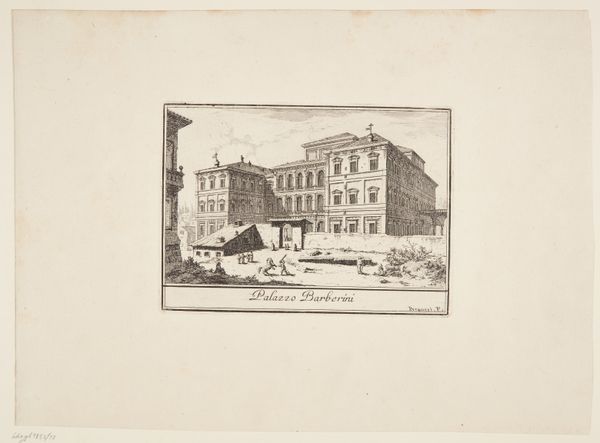
print, etching
# print
#
etching
#
landscape
#
line
#
cityscape
#
realism
Copyright: National Gallery of Art: CC0 1.0
Editor: This etching is titled "Waterloo Place, London" by Muirhead Bone, created in 1916. It's so detailed, capturing this imposing building undergoing construction, but it feels surprisingly delicate because of the medium. What stands out to you most about it? Curator: The image speaks volumes about power structures, doesn't it? An established, classically-inspired building—a seat of authority perhaps—is in the throes of being reshaped during the height of World War I. What does it mean to build and rebuild during such times? How is this moment of transition and (re)construction reflected across class, race and gender? Editor: That's a powerful point. I was focused on the architectural details, but I hadn't considered the wartime context. It makes me wonder who the workers are – what was their status during this time? Curator: Exactly! Consider how war economies relied on labor that was simultaneously hyper-visible and rendered invisible. Bone's detailed lines contrast against the blank sky, drawing our focus onto these themes of (in)visibility, reconstruction and historical progress. Whose progress was it really? How are we implicated when viewing such images? Editor: It’s interesting to think about how the artist chose to portray this particular scene. Curator: Absolutely. An artist's choices always reflect a particular ideological viewpoint. Was he questioning the notion of progress, or celebrating the strength of British institutions despite the war? It's not just about what is depicted but also *how* it's depicted that demands closer examination. Editor: I'm beginning to see the etching as less of a static depiction of a building and more as a statement, or maybe a question, about that period. Curator: Precisely! By looking at the work through multiple lenses—social, historical, and political—we begin to unravel layers of meaning and reveal not only the image but ourselves. Editor: Thank you, I see the print and that specific historical time in such a richer and complex light now! Curator: And understanding that historical time makes the print more resonant to our current socio-political conditions, I would argue.
Comments
No comments
Be the first to comment and join the conversation on the ultimate creative platform.
